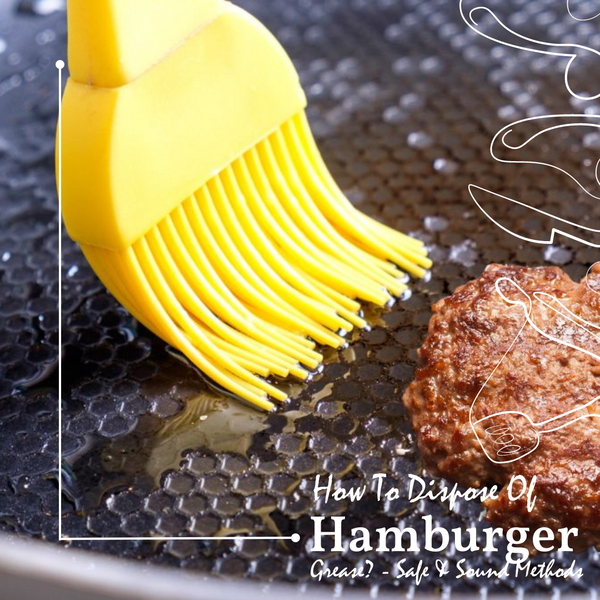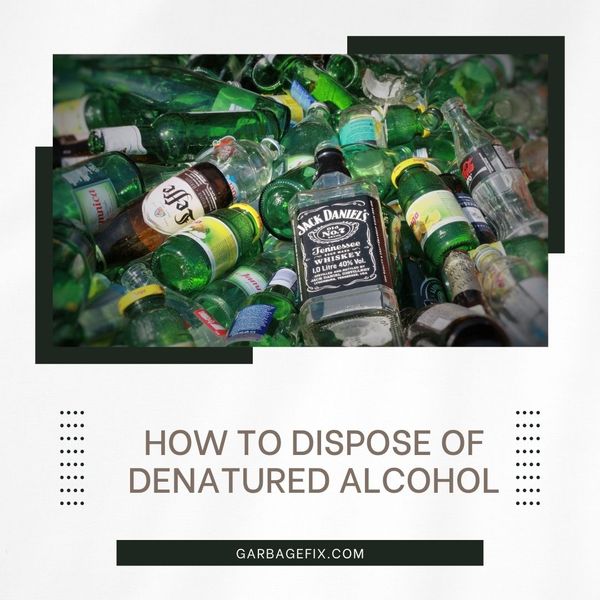This easy DIY project is perfect if you want to start composting but need more space or money for a fancy bin. All you need is some reclaimed pallets and some basic tools.
A pallet compost bin can be made in just a few hours, and it's much cheaper than buying one at the store. You can even customize the size of your bin based on how much compost you want to make!
In this article, you can find out how to make your own compost bin from pallets at home. Building and maintaining a compost bin enriches the soil, which aids in moisture retention and protects plants from pests and diseases. It also decreases the usage of artificial fertilizers.
Essential Considerations Before Making A Compost Bin From Pallets
If you're looking for an easy way to start composting, consider making a compost bin from pallets. Pallet wood is an inexpensive material readily available at most home improvement stores and can be used to do various projects, including compost bins.
If you're not sure where to begin, here are some essential considerations before making a compost bin from pallets:
Choose your pallets carefully. Look for pallets treated with chemicals or pesticides, which may leach into your compost and contaminate it. Consider using reclaimed wood over new wood, as it is often less expensive than new wood and has already had its chemical treatments applied.
Choose the right size for your needs. Many people choose large wooden crates for their compost bins because they're readily available and easy to work with; however, these aren't always the best option for those who aren't sure how much space they'll need for their garden waste or how much room they have in their yard or garden area. If you need to know how big your garden will be or how much waste you'll produce, choose a smaller version of your desired bin size to expand it later, if necessary, easily.
Kind Of Wood. Before making a compost bin from pallets, the essential consideration is what kind of wood preservative was used on them. Suppose they were treated with pentachlorophenol (PCP), which is banned in many countries due to its toxicity. In that case, they should not be used because they could leach dangerous chemicals into your compost pile over time. The safest option is to find untreated pallets made only from kiln-dried hardwood boards milled from trees raised organically without pesticides or herbicides.
If you’re building a large compost bin that an entire family or community will use, use a minimum of four pallets per side. For smaller bins, two or three will do just fine.
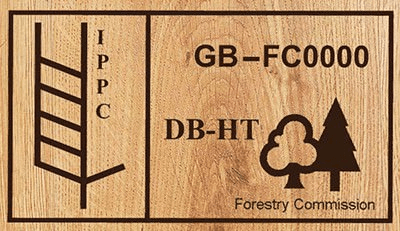
Equipment Needed For Pallet Compost Bins
Pallet compost bins are easy to make and a great way to recycle old pallets. Pallets are inexpensive so you can make a large compost bin for very little money. And since pallets are made of wood, your compost bin will also be fireproof.
You can use the following materials to build your pallet compost bin:
- A few wooden pallets
- A hammer and nails or screws
- A saw (optional)
The exact number of pallets needed depends on the size of the compost bin you want to build. For example, if you want a 4x4x4-foot bin, you'll need four 4-foot pieces of wood (two for each side) and four 4x4x4-foot pieces for the bottom and top of the bin.
Best Pallets For Building A Compost
The best types of materials for building a compost bin are sturdy and not likely to break down over time. The best materials include:
Wood pallets:
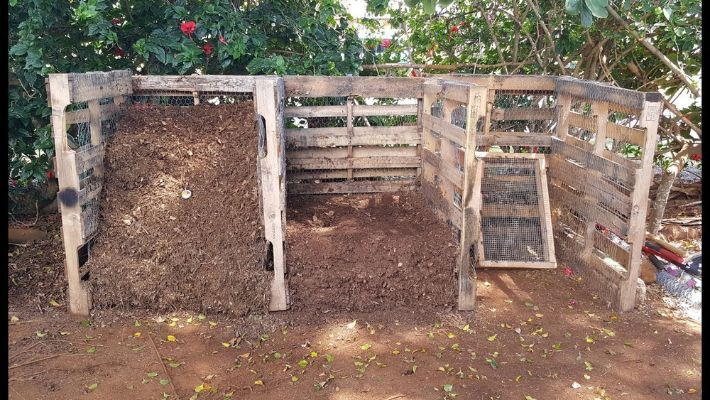
These are often available for free at hardware stores and lumber yards. They're usually made from treated lumber, which makes them resistant to rot and insects. Pallets also have holes that allow air circulation and drainage, so they don't need any additional ventilation or drainage holes drilled into them like other types of wood.
You have several options if you want to make a compost bin from wooden pallets.
Hard plastic:

Hard plastic bins are another good choice because they're durable, don't attract rodents, and can be easily cleaned out with soap and water if they get too dirty or smelly inside from rotting food scraps sitting inside of them for too long without enough air circulation getting inside of them so that oxygen can get inside.
Softwood:
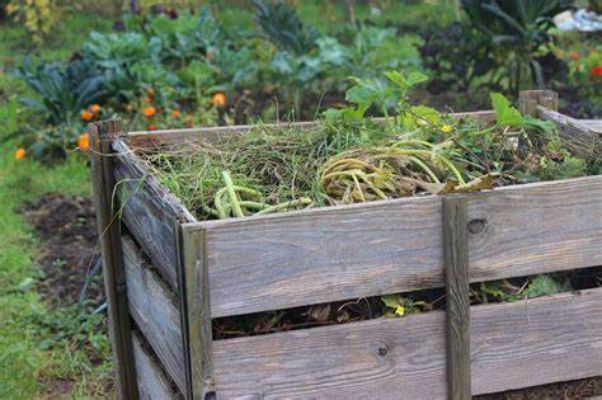
Softwood bins are the easiest to make, but they may only last for a short time as hard plastic bins because softwood can rot more easily in moist environments like compost bins.
How To Make A Compost Bin From Wooden Pallets? - Ultimate Guide
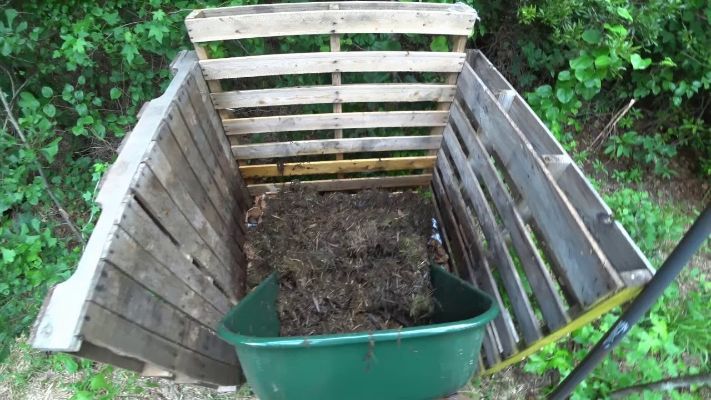
You can build a compost bin out of pallets, which are readily available at many stores and warehouses. This is a great way to recycle wood and use otherwise unusable material. Your compost bin will be sturdy and durable and provide fresh compost for your garden.
If you are interested to know How To Make A Compost Bin From A Plastic Dustbin, you can read us here.
Choose the Right Wood
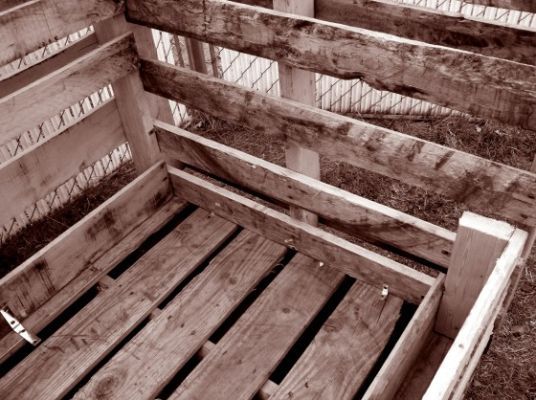
The first step to building a compost bin from wood pallets is to find the right wood. You want to ensure that you are getting used pallets from a reputable source because if the pallets have been treated with chemicals, they are not safe for food production.
The best pallets to use for your compost bin are the ones that are made with pressure-treated wood. These pallets have been treated with chemicals that help prevent rot and insect infestation, but they also leave behind a residue when broken down.
If you want a compost bin that doesn't smell or attract pests, you'll need one made of these pallets. If your pallets aren't pressure treated, it's best to use them for other projects around the house instead of trying to make a compost bin out of them.
Number of Pallets You Need
The number of pallets required depends on your composting needs. The material for this compost bin was sourced from a local restaurant that was closing down. One restaurant had given away all its used wood pallets, and we got 14 to 16 from them.
These are the dimensions of the compost bin:
- Length - 7 feet (2.1 meters)
- Width - 3 feet (0.9 meters
- Height - 4 feet (1.2 meters)
- A pile of used 2-by-4s (the kind you find at home improvement stores) or 2-by-10s (the kind you find at lumber yards). The 2-by-4s are cheaper, but the 2-by-10s are easier to work with. Either will work great for this project.
16 or more used wood pallets - enough for two bins if you want two or four bins if you want four. You can also use two pallets per bin for just one bin and some extra leftover wood. If you're building four bins out of 16 pallets, keep track of which pieces go where so they're interchangeable later on when it comes time to move them around again.
Break Down One Pallet
Break apart the wooden planks with a crowbar or other sharp tool until you have enough for your compost bin. The size of your bin will depend on how many planks you have available — typically, one pallet will give you enough wood for a small bin around 12 inches deep.
Build The Frame
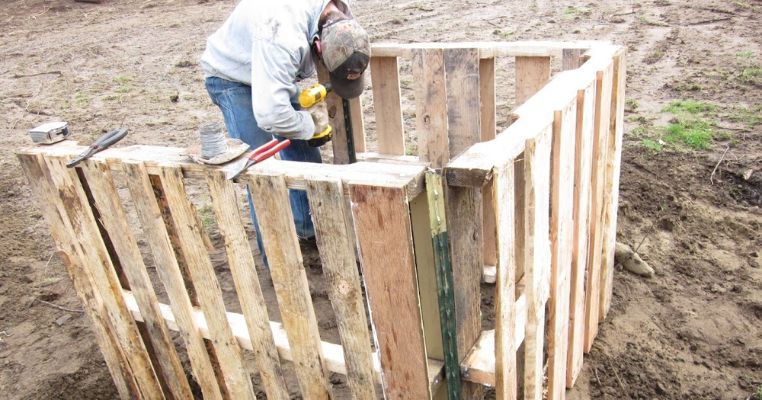
Put the first three pallets in the shape of a box on a stable, level surface. Check that the pallets are in the right place. Make sure the ground below is either grass, soil, or porous. Otherwise, your composter won't work. It needs a foundation that drains well, or you'll end up with nasty goop!
Put The Compost Structure Together With Decking Screws

To secure the pallets, drill a pilot hole in one of the bottom corners and put a decking screw. It means that if you're working by yourself, it won't be hard to keep up with them. This will save you a lot of trouble later!
Before each decking screw, make a pilot hole, then drill and screw another into the top corner. Do this in both corners. Then, start screwing decking screws into each pallet brace from the bottom to the top on each side. This should be used to connect each side to the other. Use as many screws as there are square blocks between the two sides, which stand for bracing.
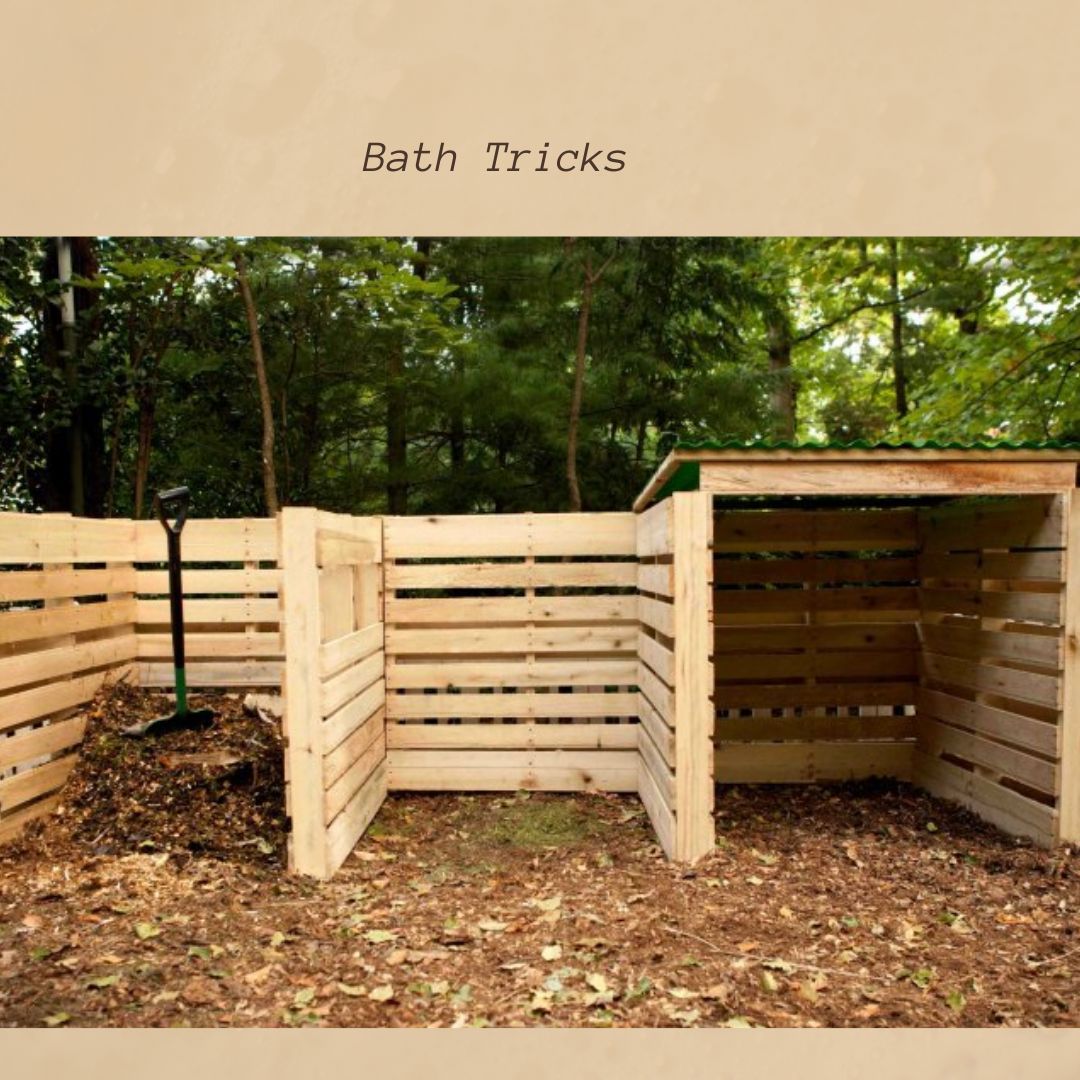
Add Brackets In The Shape Of An "L" To The Compost Bin
Put "L" shaped brackets or angle brackets on the sides of the compost bin frame. This makes the structure stronger so that it can hold up the weight of the compost. Again, drill holes first to keep the wood from cracking. I'd say at least three, with the top, the middle, and the bottom. But more is always better!
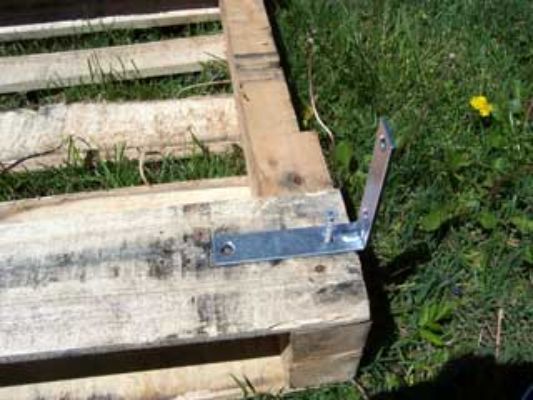
Add A Door To Keep The Compost And Heat Inside
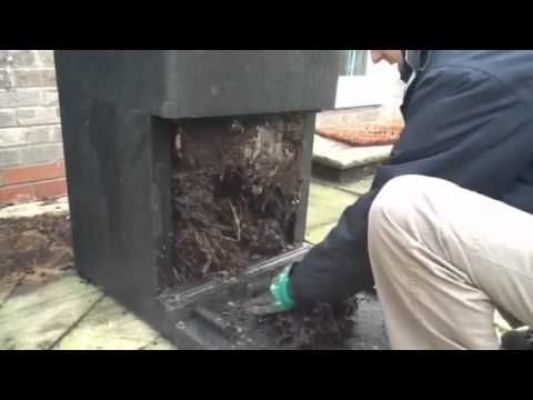
Use the last wooden pallet to make a door when you're done. Cut this in half with a sharp wood saw and a pallet of the same size, just below a brace. Use gloves and take your time to get a clean cut. Sand away any splinters or snags to make the door look better.
Install Door Hinges To Prevent The Compost From Falling Out
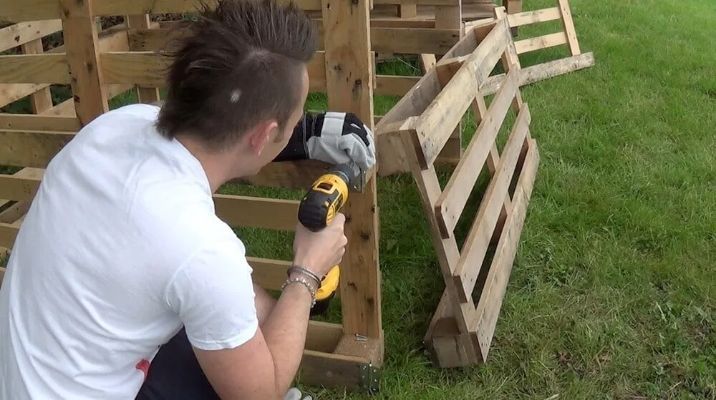
Hold the door against the frame of your compost bin and use a pencil to mark where the two hinges are. Put them on the outside so the frame can swing open. Make sure the door is also a few inches off the ground. It makes it possible to open it without tripping.
Lock Up The Door
After you've put the hinges in place, attach the door frame to the side of the hinge opposite the hinge. Add a latch and an eye on the other side of the door to make it safe. It is stylish and keeps the door from being opened by wind or anything else.
Assembling the Compost Bins
Step 1: Assemble the sides of the bin by connecting two pallets with nails or screws. The two end pieces should be at an angle rather than straight, so rainwater can flow easily when it rains.
Step 2: Connect two more pallets for each end piece so that there is an open space between them for filling in compostable material.
Step 3: Use nails or screws to secure these two side pieces together at each corner to form a square shape with an open bottom area where you will fill in your compostable material later on. You can also add braces if necessary to keep everything sturdy and strong, especially if you have heavy materials inside your bin, like stones or rocks, which will weigh down on your structure.
Line The Bin With Chicken Wire
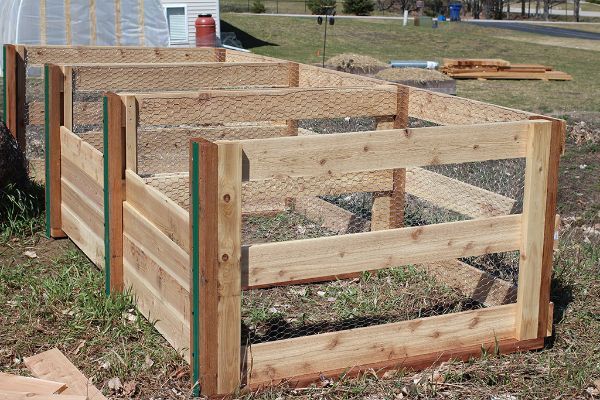
Cut chicken wire big enough to cover all sides of your compost bin, then staple it on each side, forming a box shape. If there are gaps where you want it snug against the boards, you can use wire ties or duct tape to keep it in place until you get around to adding more staples or tacks when everything is dry enough for those materials not to ruin what's inside).
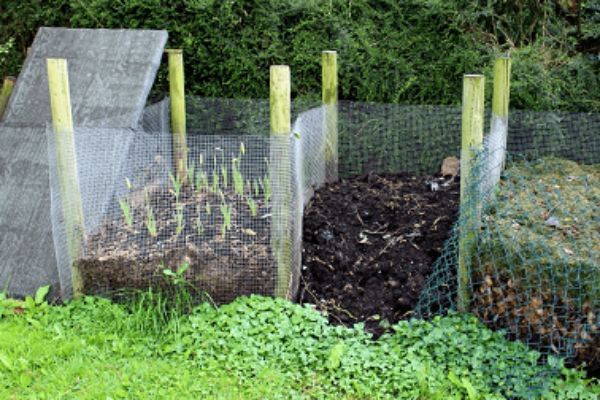
Why Make A Compost Bin From Pallets?
Composting can be done in many different ways, but the most common method involves creating an outdoor pile or bin that contains layers of organic material like leaves, food scraps, or grass clippings mixed with soil or sand. The idea behind this method is that bacteria will break down the organic material into usable fertilizer over time — as long as you keep adding new materials periodically and turning or mixing them occasionally to speed up the process.
Never Put These Things In The Compost Bin
Onion peels, lemon peels, egg shells, and old bread may be put in small amounts, but the following should be avoided to put in the compost bin.
Wasted Fish And Meat
Rotting fish and decaying flesh have a foul odor. Skunks, raccoons, rats, flies, and other wild creatures are attracted to offensive scents. Never put them in compost. Even a sealed compost bin might attract picnic insects.
Dairy Items, Fats, And Oils
Pests are attracted to cheese, butter, milk, sour cream, yogurt, fats, and oils. Avoid processed dairy and fat-rich meals.
Ash From Charcoal
You may use ashes from your fireplace or outdoor fire pit in your compost (in limited amounts). First, these components include an abundance of sulfur, which renders compost too acidic for most plants. Second, charcoal briquettes can have plant-harming chemicals.
Pet Feces
Dog and cat feces cannot be composted. Both cats and dogs may harbor pathogens and parasites that cause human sickness. Dog feces often include roundworms. Cat feces and cat litter may spread the bacteria, damaging a fetus.
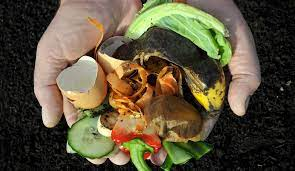
FAQs
Do you need to line a pallet compost bin?
Here's what experts recommend:
- Use a liner if you have poor soil quality or want to avoid adding extra nutrients. This is an easy way to keep the inside of your compost bin clean and free from debris or pests. You can also use a liner if you're worried about chemicals leaking from the wood.
- Only use a liner if you have good soil quality or want more options for using your compost (for example, using it as mulch over winter). Liners also make it harder to turn your compost pile — something that should be done frequently for everything to break down properly.
Does a wooden compost bin need a bottom?
If you're building your compost bin from scratch, you don't usually need to add a bottom. However, if you're using pallets, add a bottom so the wood doesn't rot in the ground.
To make the bottom, find two more pallets and cut them down to size. Place them on top of each other with their ends facing each other, and nail or screw them together. You can also use screws with a sheet of plywood or another pallet between them.
Set your finished pile inside this box and fill it with dirt or sand to keep it from sinking into the ground.
How long will a pallet compost bin last?
Pallet bin sides generally last from four to six years, depending on how heavily they are used and how well they are maintained. The wood tends to age quickly in the sun and rain, but you can seal it with clear varnish or paint to slow the aging process.
How much does it cost?
The typical cost for building a pallet composter is about $100 if you buy all your materials at home improvement stores and pay retail prices. This project becomes much more affordable if you can find used pallets for free.
How do you make a simple compost bin?
Here are some easy ways to make your compost area:
Use an old trash can. One of the easiest DIY ways to make a compost bin is to start with a trash can—something you may already have—and drill several holes so your compost can get plenty of air and break down quickly. Then, you can tuck your new bin into a convenient spot and add organic material.
Buy an outdoor composter. If you want something more permanent than a regular trash can, consider purchasing an outdoor composter made from plastic or metal with built-in ventilation holes for better aeration and drainage. Many stores sell these products online or in-store for under $100 each (for example, here’s one from Amazon). The main downside is that they take up space outdoors where you may not have much room for them—but if you do have space outside your home or apartment building, they can be perfect.
Make a homemade compost bin. If you don’t want to buy a new container, you can make one by using two old plastic containers (one smaller than the other) and some wire mesh to separate the materials' layers into the bin. Drill holes into both containers so they fit together snugly, then place your compostable materials inside the larger container and cover it with soil as needed (the smaller container will allow air to flow through its holes). This method works best if you only want to compost kitchen scraps—if you want to compost yard trimmings as well, then you might need a bigger bin designed specifically for that purpose.
Conclusion
The Compost bin is a valuable and convenient item that may be created using pallets at home. You need a few tools you already have at home, and this comprehensive instruction from this article will assist you with your bin. Additionally, this is highly beneficial for the natural environment.




